SOn Sunday evening, April 21, 2024, I am meeting my colleagues at a traditional Japanese izakaya pub – Gonpachi Nishi Azabu.
The word izakaya is a compound word made up of iru (“to stay”) and sakaya (“sake shop”), suggesting that izakaya originated from sake shops that allowed customers to sit inside and drink. The one my hosts chose is really stylish in a medieval style. Today it caters more to tourists, but it also starred in Quentin Tarantino’s 2004 film Kill Bill. We enjoy fresh soba noodles, grilled skewers, tempura and other dishes accompanied by a show with Japanese drummers.
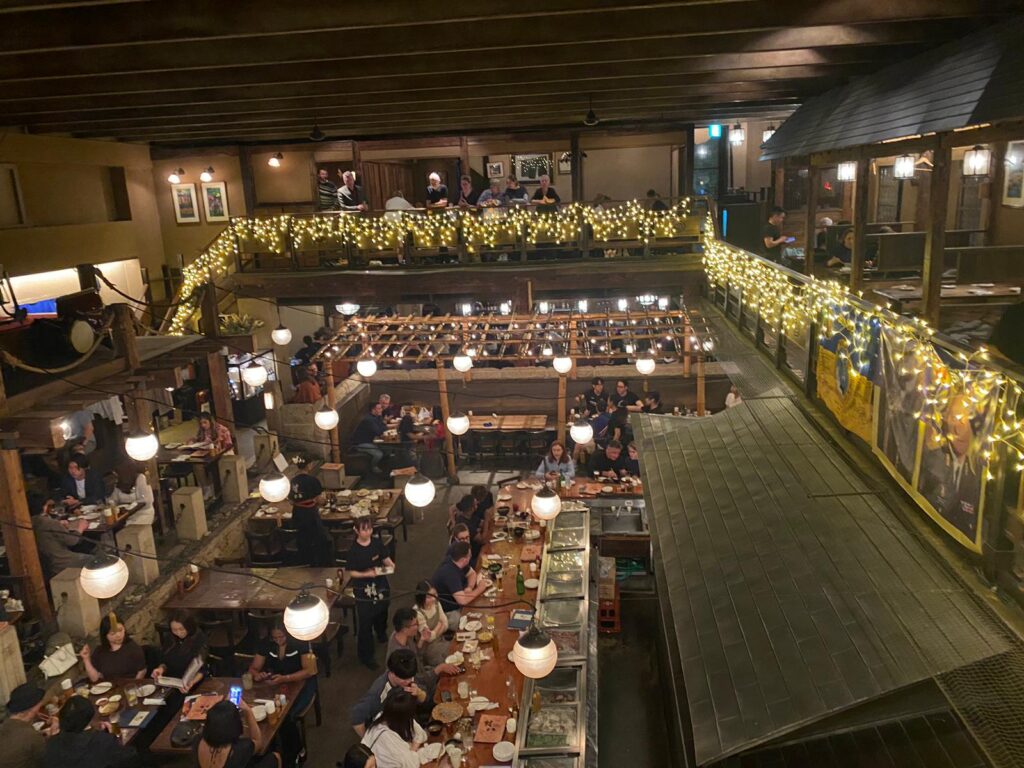


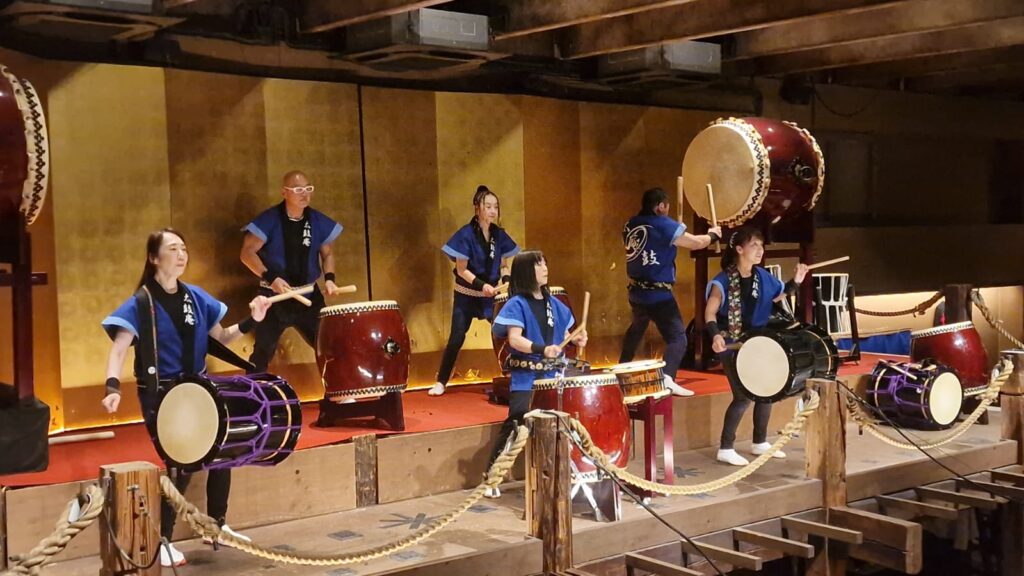
Monday, April 22, 2024 is a busy day, but we still have enough time to visit the Otsuna Sushi restaurant, where in addition to sushi, they also make excellent sashimi seasoned with fresh sudachi fruits and ponzu sauce, traditionally made from the juice of yuzu or kabosu fruits. Unfortunately, I forgot to ask where they get fresh green sudachi in April. Probably the secret of Japanese cuisine. Sashimi is a Japanese dish consisting of raw fish or other seafood, sliced. I preferred not to ask too much about what I was actually eating.




Even on Tuesday, April 23, 2024, there is no time left for anything other than dinner. This time we chose the restaurant Kasuiti Roppongi, which serves the famous shabu shabu. It is usually made from thin slices of beef and served with tofu and vegetables, including nori (edible seaweed) and shiitake and enokitake mushrooms. The dish is prepared by immersing a slice of meat or a piece of vegetable in a pot of boiling water. The cooked meat and vegetables are usually dipped in ponzu (soy sauce with yuzu juice) or goma (sesame seeds) sauce before eating and served with a bowl of boiled white rice. Guests prepare the dish themselves.



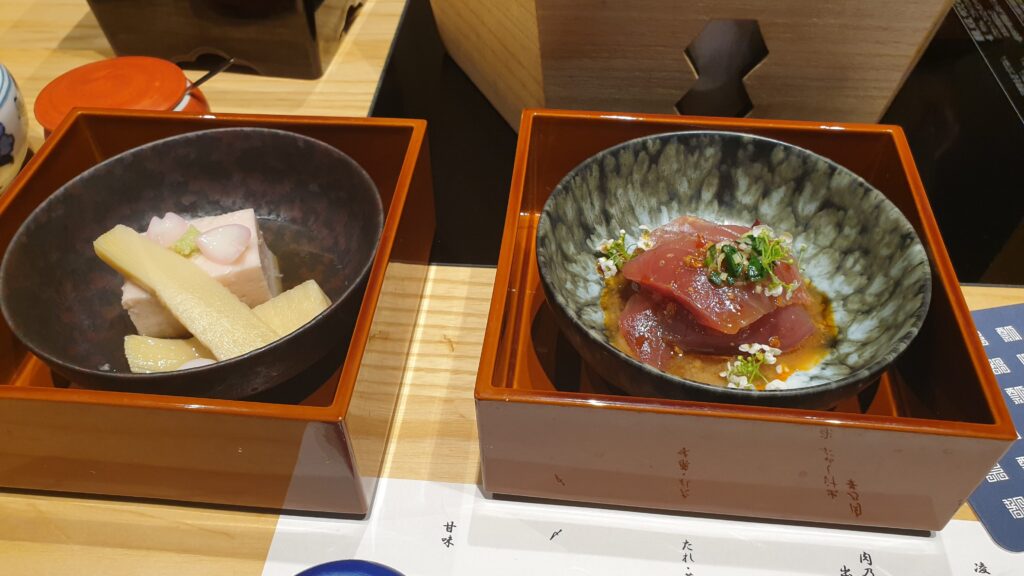
On Wednesday, April 24, 2024, we have a free day, so we decided to visit the gardens of the Imperial Palace and the nearby historic Central Station. But it is raining heavily, so we first take refuge in Jojoen – a Japanese Yakiniku restaurant. Yakiniku is a way of preparing meat and vegetables on grates or grids over a charcoal flame or on a gas/electric grill. It is one of the most popular dishes in Japan, where guests grill the meat themselves in the restaurant. The origin of modern yakiniku is considered to be Korean barbecue, one of the most popular dishes of Korean cuisine. This time it is not an experience with citrus fruits, as a sweet sauce is used, where apples serve as a flavoring.
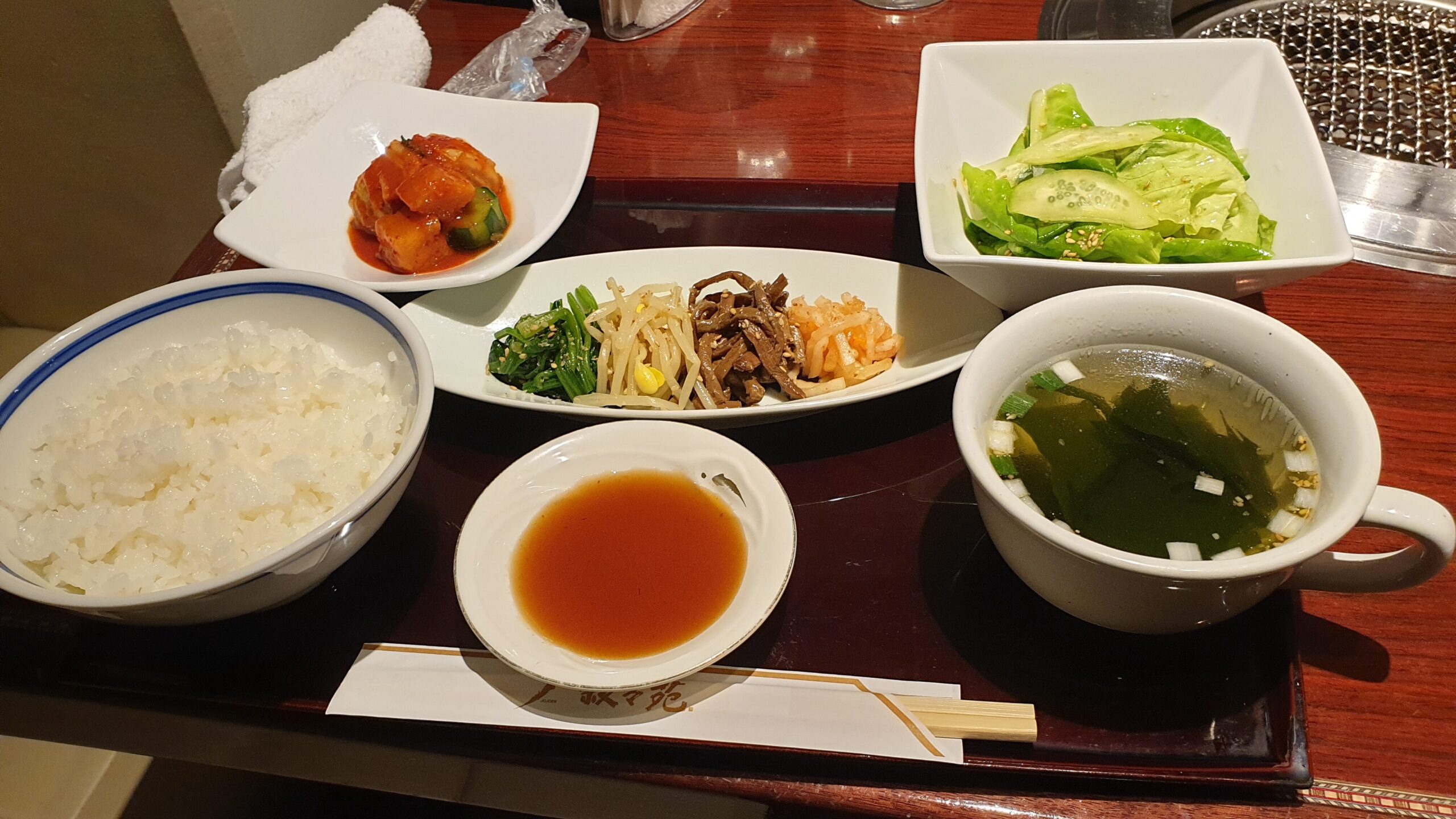


The station opened in 1914. Since then, it has served as the main terminus for intercity trains departing from Tokyo. It is the busiest station in Japan, with over 4,000 trains arriving and departing daily. On average, over 500,000 people use the station daily. There are also a number of shops on the premises, and citrus fruits are everywhere. Pictured is a shop selling Kabosu juice, Nori Kuro (seaweed flavored with Yuzu), and Ponzu sauce made from Hyuganatsu.
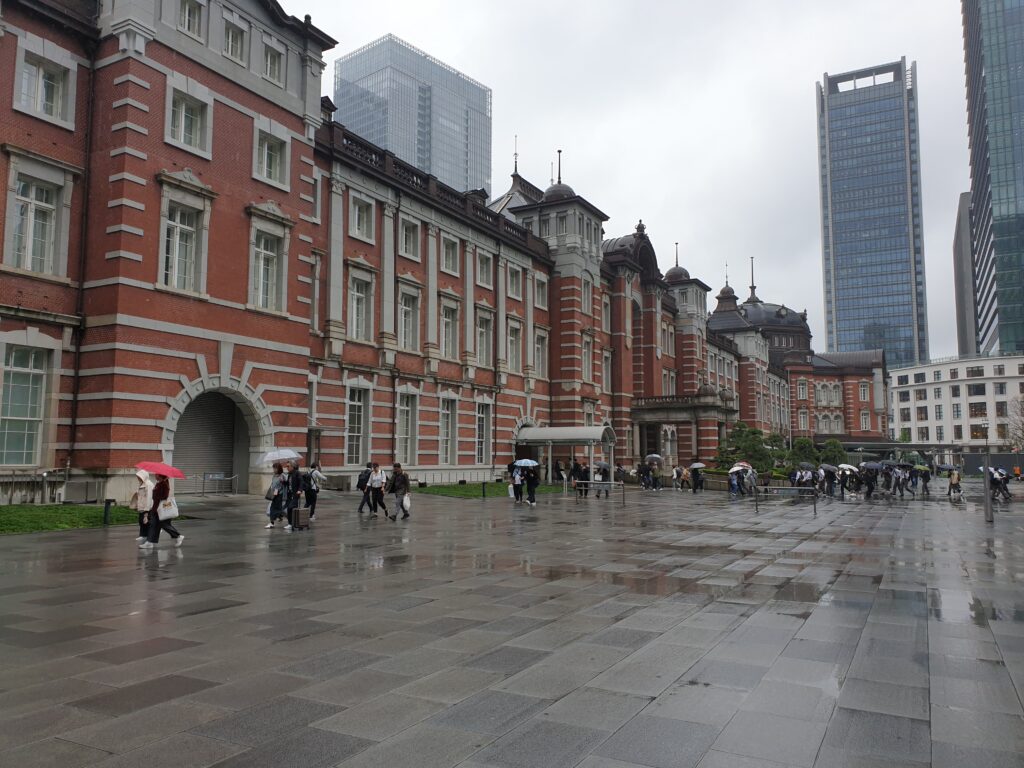



Finally, despite the heavy rain, we set off to the Imperial Palace. The cherry blossoms are already out of bloom, but we still see one late bloomer. The Imperial Palace is the main residence of the Japanese emperor. It is a large park-like area where the emperor has his living quarters and where the main palace is located, where various ceremonies and receptions are held. The palace grounds and gardens, covering an area of 1.15 km², are built on the site of the old inner fortifications of Edo Castle. Edo Castle was the residence of the Tokugawa shoguns, who ruled Japan from 1603 to 1867. In the years 1868-1888, Emperor Meiji also stayed here before moving to the newly built Imperial Palace. The eastern gardens of the Imperial Palace are open to the public. None of the main buildings of the castle have survived today, but the moats, walls, entrance gates and several guard houses still exist. The rest is home to charming Japanese-style gardens. The gardens also include an orchard with old fruit cultivars, including citrus fruits. However, due to heavy rain, we give up walking through the entire gardens and head to the hotel to dry off.
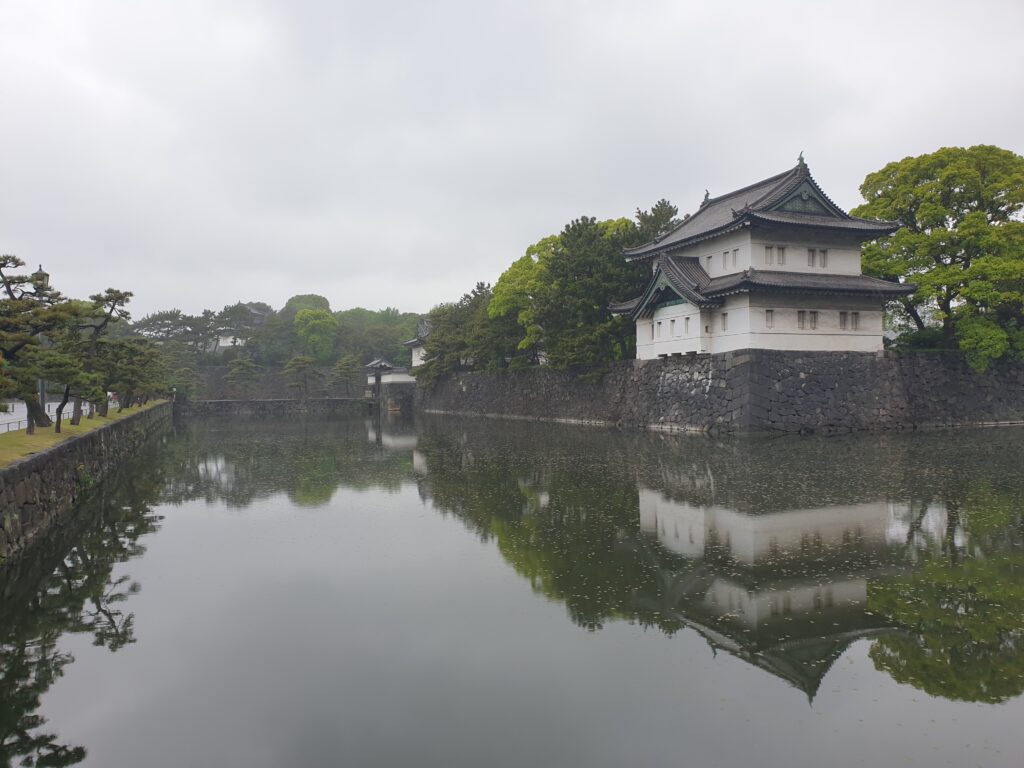
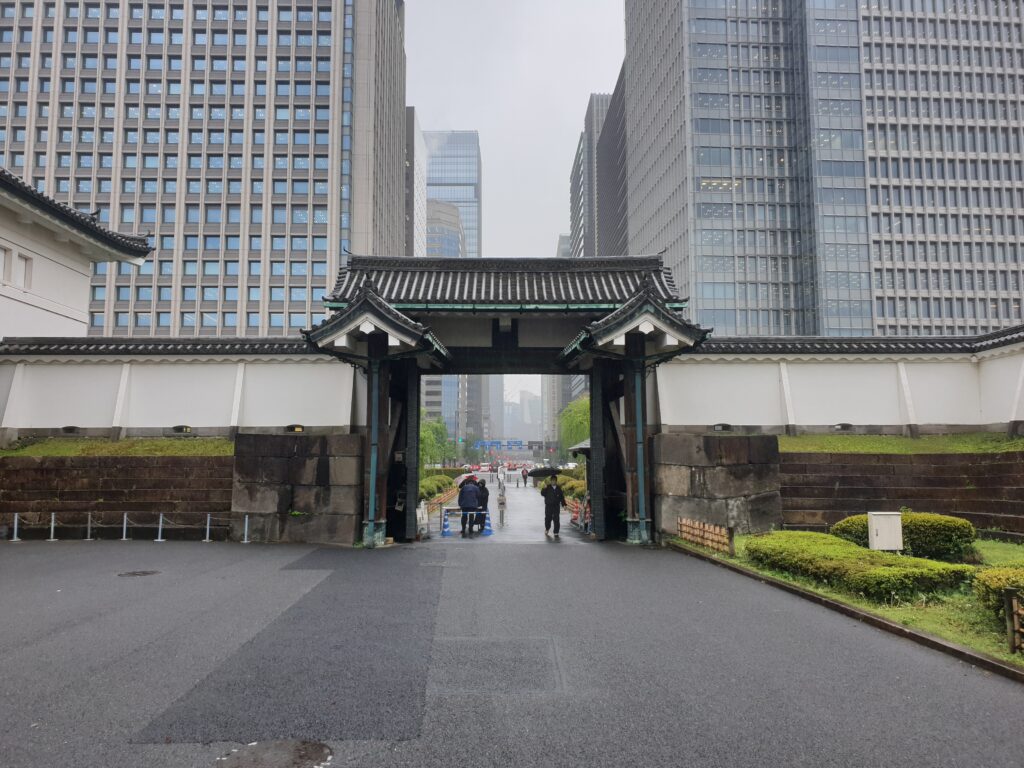
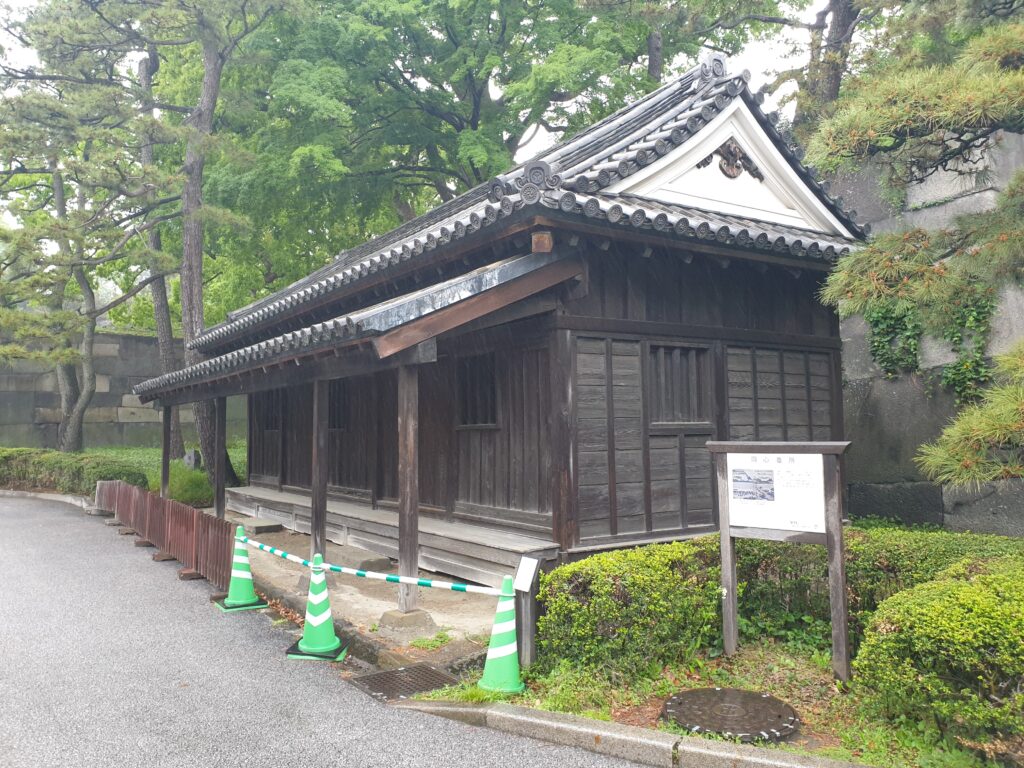
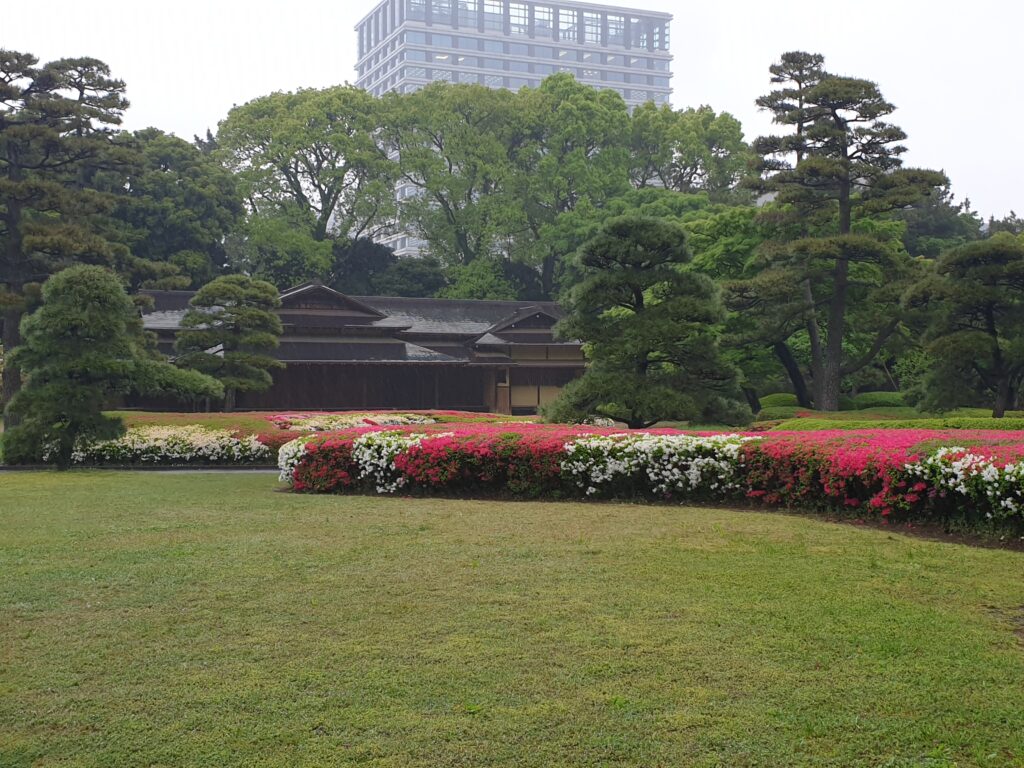
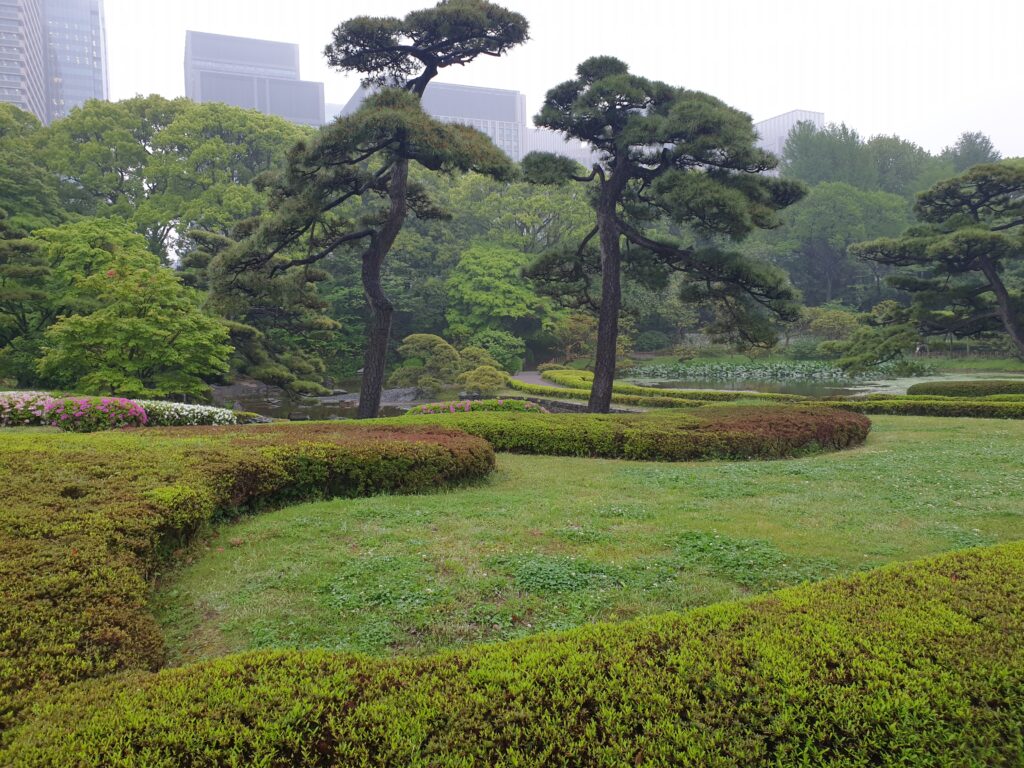
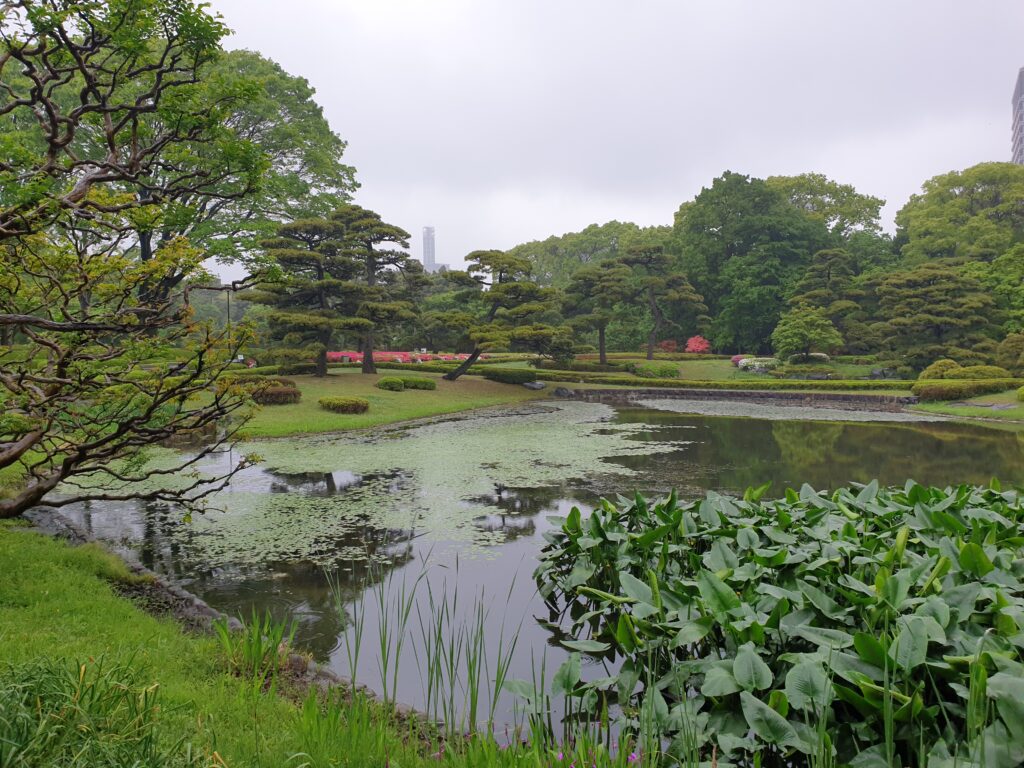
Thursday, April 25, 2024, is also a little more relaxed, so we can do more. First, we visit Kinka sushi bar, where in addition to sushi and sashimi, cooked sushi is also served. There is still something new to learn. Sushi is cooked rice combined with a special sweet and sour sauce sushinoko prepared for this purpose. The word sushi literally means “sour taste” in Japanese. The history of classic sushi, as we know it today, began in the 15th century – various cooking schools were born, as was the famous Japanese tea ceremony. Fish used to be preserved in rice, which was thrown away. However, the fermentation time was radically shortened at this time, and the rice could no longer be thrown away and was consumed together with partially fermented fish. Today’s most famous type of sushi, nigiri-sushi, originated at stalls in the early 19th century as a fast food: placing a piece of fresh fish on top of a rice ball took a few seconds. The fish began to be served fresh, without fermentation. But, as you can see, this is definitely not the only way to prepare sushi.

In the early evening, it is time for another cultural highlight – a visit to the Buddhist Tojokawa Inari Akasaka Shrine in Tokyo. The story of Tojokawa Inari is deeply rooted in Japanese history. The temple was founded in 1828 in the city of Moto-Akasaka. The temple’s origins date back to a vision experienced in the 13th century by the third son of Emperor Juntoku, who saw the deity Dakini-Shinten on a white fox. During the Meiji era, when Buddhism was facing persecution, Tojokawa Inari Temple maintained its Buddhist identity by claiming that its main object of worship was the Buddhist deity Dakini-Shinten, and not the Shinto fox god. This strategic move allowed the temple to survive and flourish, becoming a unique example of religious coexistence in Japan. The temple’s importance grew over time, and the temple began to be associated primarily with the entertainment industry. Its proximity to the former red-light district of Akasaka-mitsuke contributed to its popularity among artists, musicians and performers who came here to pray for success and good fortune. Today, the temple has branches in all major cities in Japan, which are more or less faithful copies of the original temple. The one in Tokyo is a true oasis of peace in the middle of the bustling city.
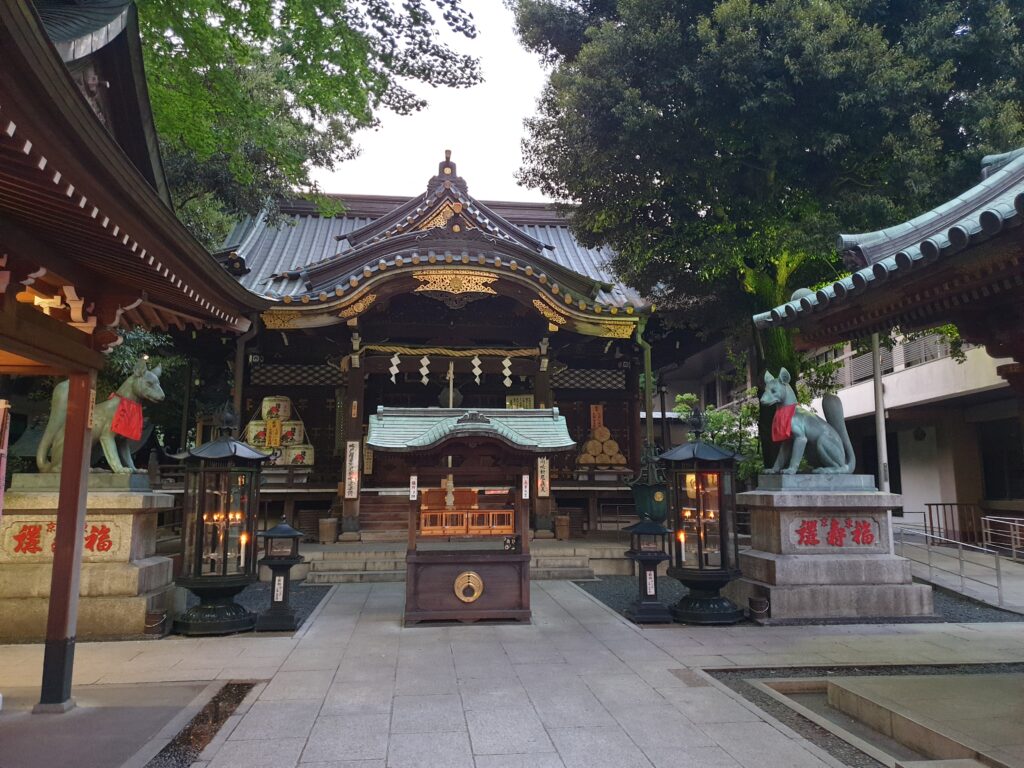
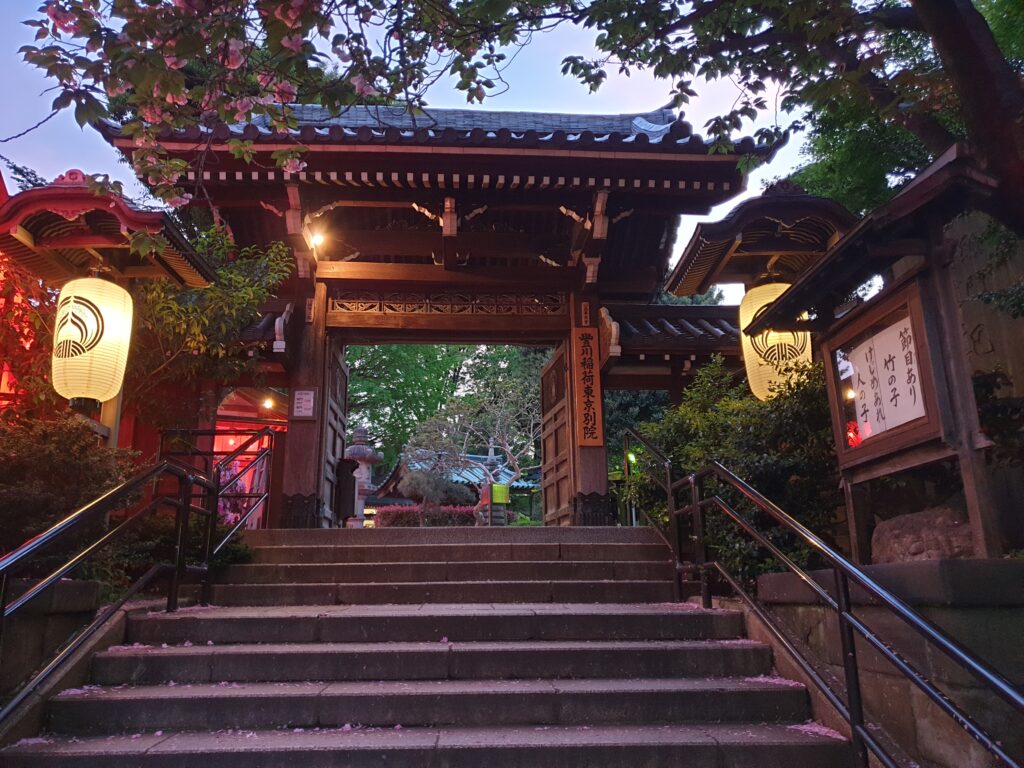
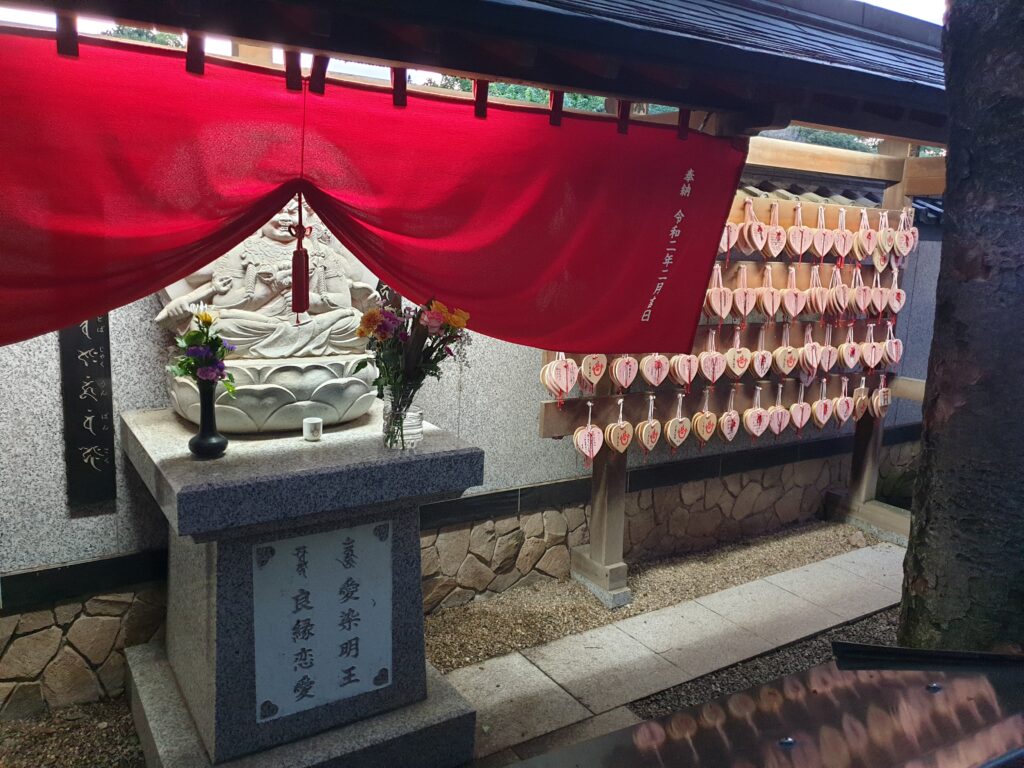
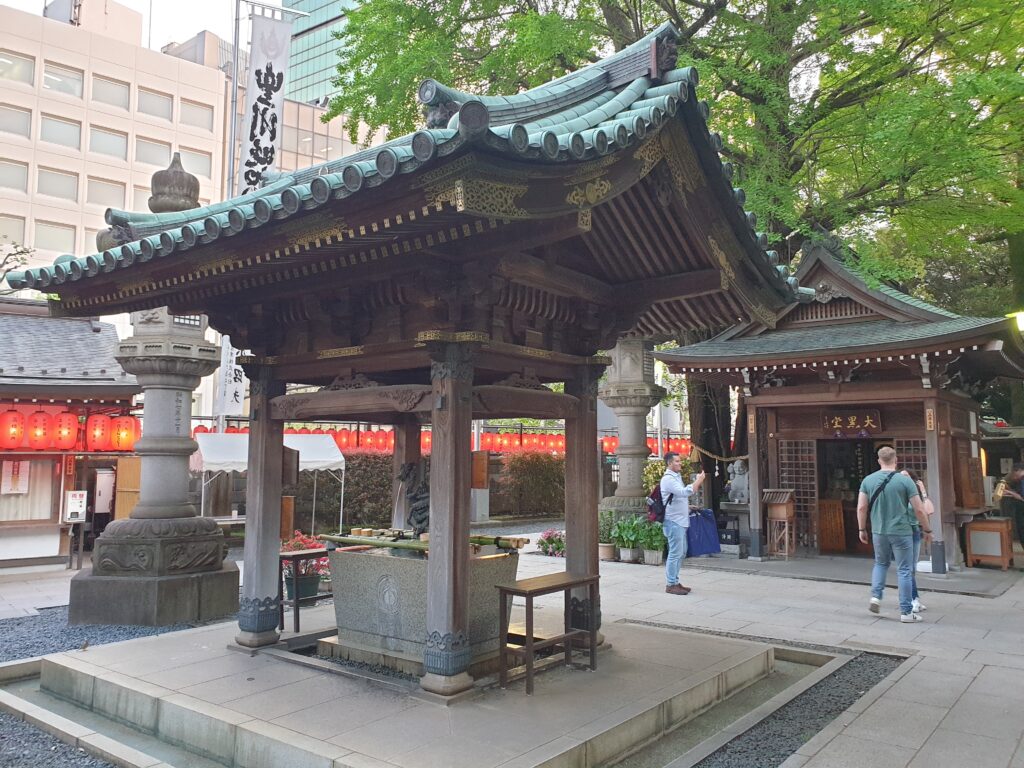
We move through the night city for another tasting, this time to Nakago – a Japanese restaurant with Ramen noodles. Anyone who visits Tokyo will soon understand that the daytime face is completely different from the night one. Busy traffic, gray and concrete during the day – a beautifully lit living city at night.
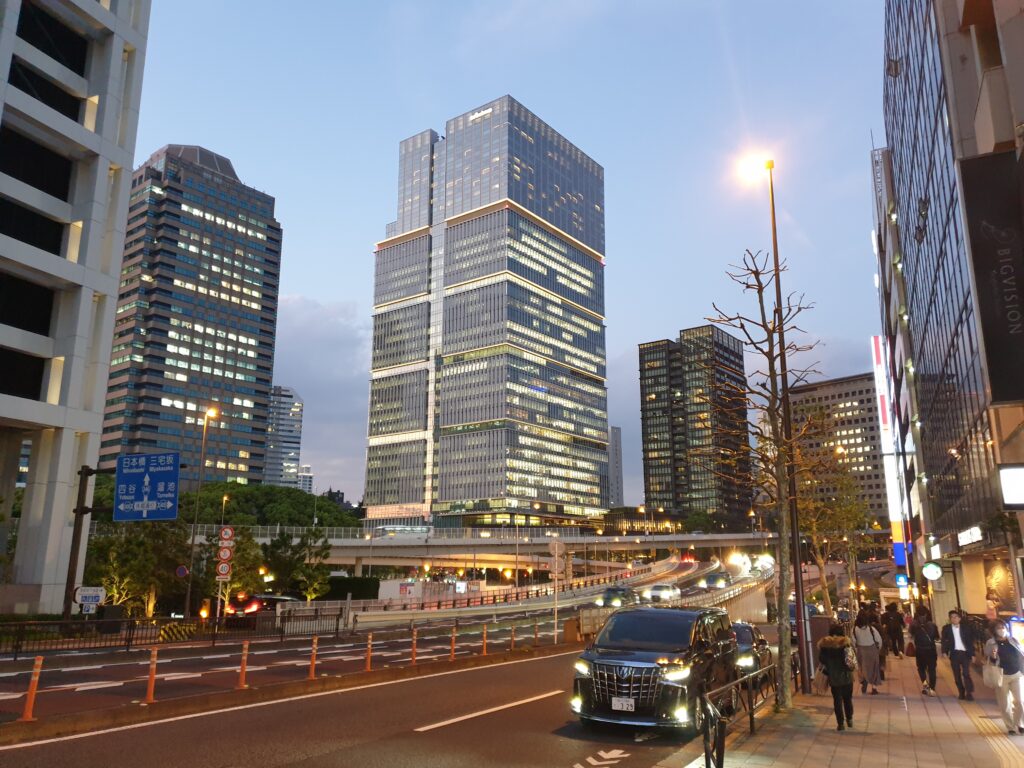
Ramen is made up of four main ingredients: broth or dashi, a seasoning sauce (tare), ramen noodles and side dishes, including pork, egg and often a number of other ingredients (dried mushrooms, nori seaweed, wakame, marinated bamboo shoots, spring onions, kombu, etc.). In the background, I also recognize the obvious taste of Yuzu, of course. Although it is a 4000-year-old dish, the Japanese today consider it more of a junk food, something you eat when you are hungry, not when you have a choice. Nevertheless, we enjoyed it, ramen is simply a classic.

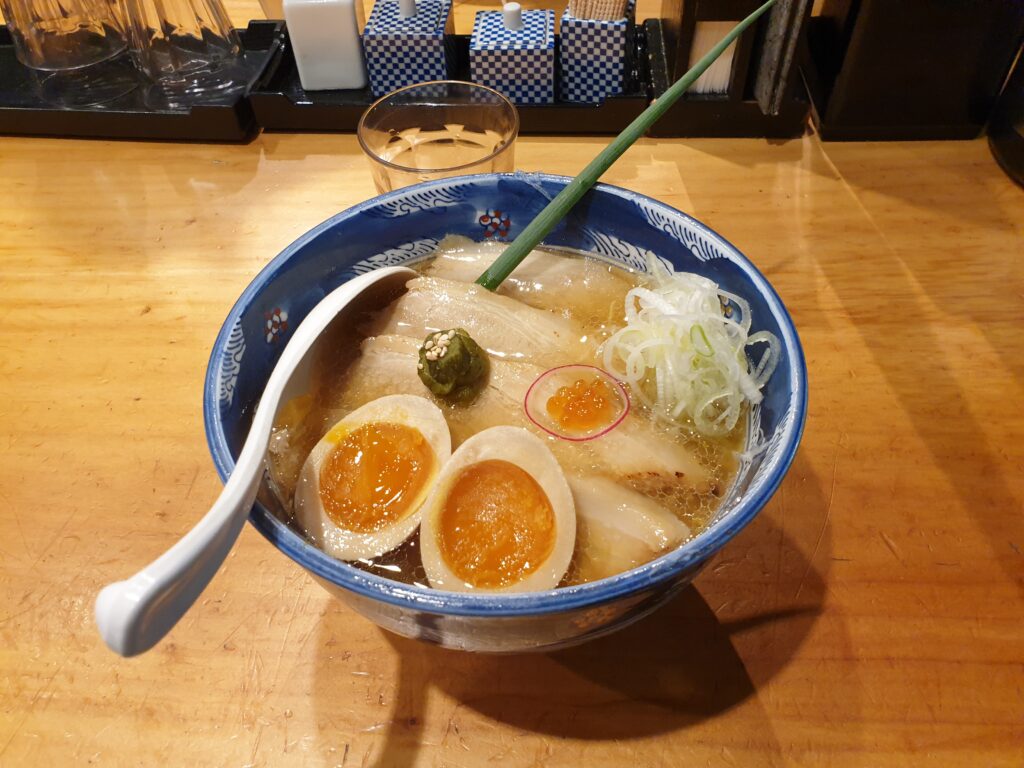
The last working day is Friday, April 26, 2024, and I’m just finishing up work and packing. I have a long weekend ahead of me, and I have to go to the airport early in the morning, catch a plane to Okinawa, and have a busy day of traveling.
Search for citrus trees in Okinawa – Business week in Tokyo – Day One – Day Two – Day Three – Day Four
